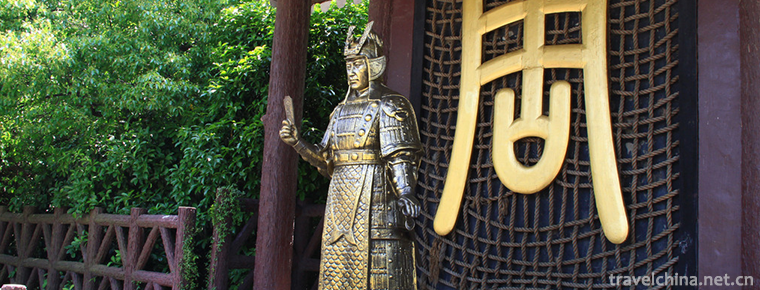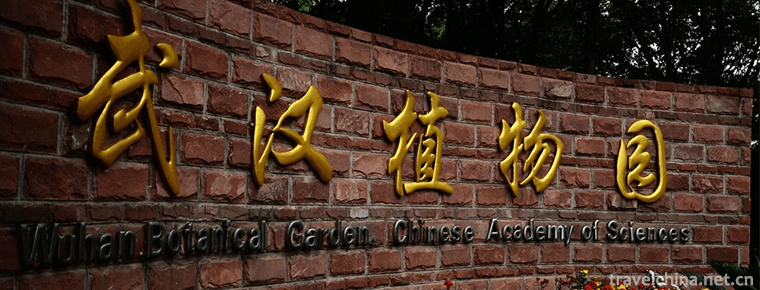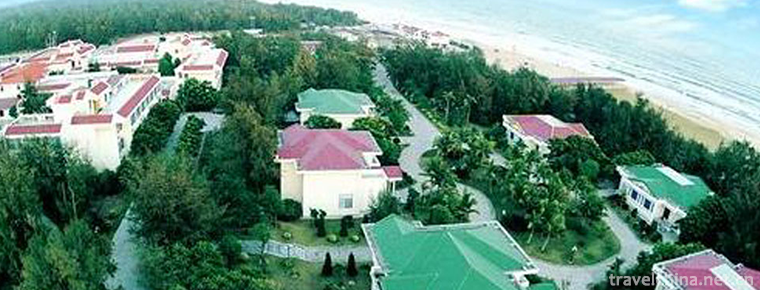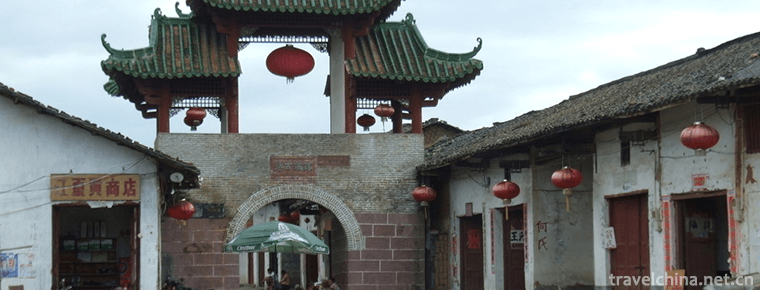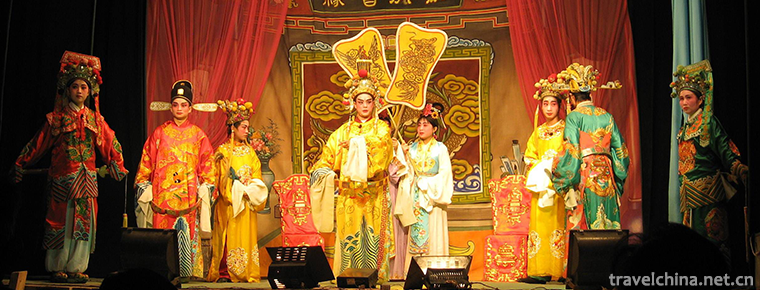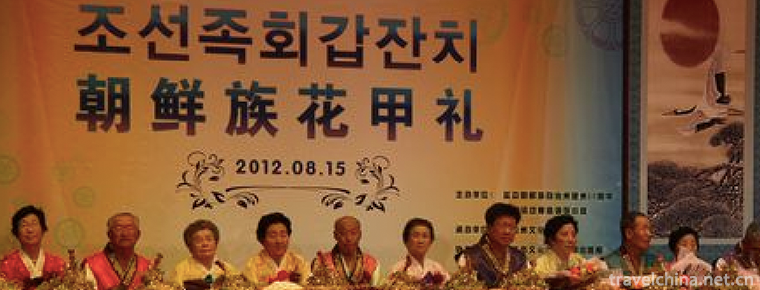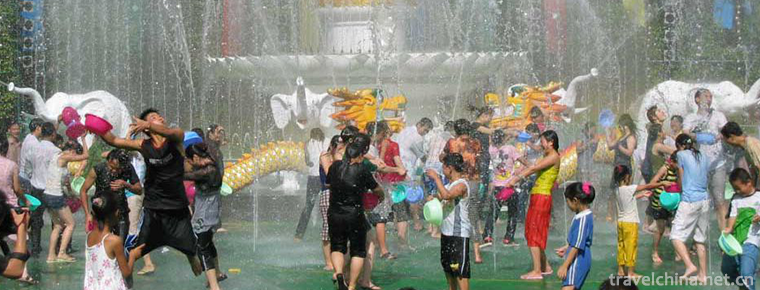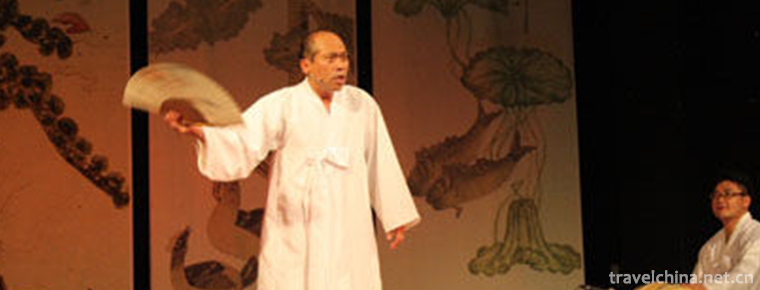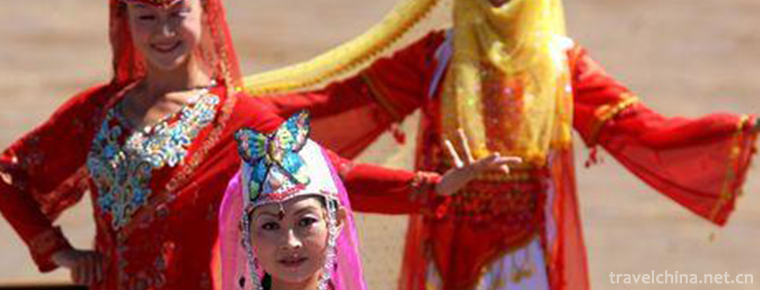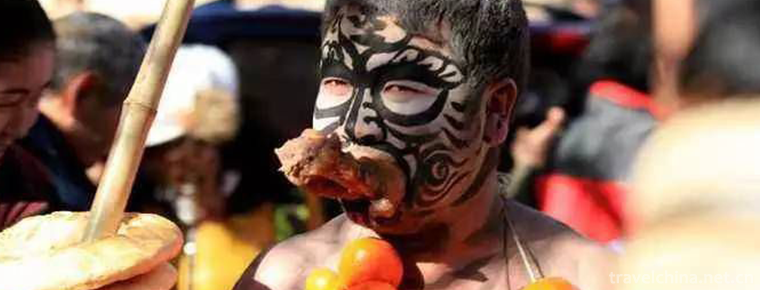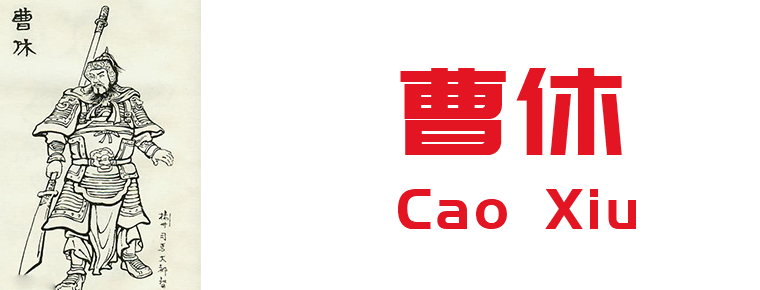Wuhan acrobatics
Wuhan acrobatics
In the 20 years of Qingdaoguang (1840), folk acrobats from Tianmen, Wuyang and other places in Hubei came to Wuhan to perform, and then gradually formed a class club to enter the stage. Folk artists such as acrobats, tricks and animal training gathered in Houhu, Hankou, to perform in the open air. "Bamboo Branch Ci in Hankou" describes acrobatic activities at that time: "All the girls in the car race, nine out of ten are numb. They look at the money and throw it back for reward. They carry bronze gongs everywhere (quoted from Wuhan City Chronicle - Cultural Chronicle).
In 1919, after the opening of Hankou People's Paradise (new market), Yonghe Hall became an acrobatic performance center, performing more than 20 acrobatic shows every day.
Around the Anti-Japanese War, more than 50 acrobatic groups came to Wuhan to perform.
Before and after the liberation of Wuhan, 12 acrobatic groups headed by famous acrobats and magicians were fixed to perform in the public paradise, such as Ling Fantian's Venus Magic Troupe, Tang Shaolian's Guangming Troupe, Cheng Yaqin's Global Circus Troupe, Xu Feilong's Global Flying Troupe, Mao Longhu's Youth Technical Troupe, Xia Qun's Group Art Circus Troupe, Shen Chunlin's Chinese Circus Troupe and Yao Xinting's Nanyang State Troup It provides conditions for the inheritance and development of Wuhan acrobatics.
In 1953, the Wuhan Acrobatic Troupe was formally established. Around 1960, the Wuchang Acrobatic Troupe, the Jiangan Folk Acrobatic Troupe and the Zhongshan Park Domesticated Animal Troupe joined the troupe one after another, laying a solid foundation for the further development of Wuhan Acrobatic Troupe.
In the 1990s, Wuhan built a first-class acrobatics hall in the whole country, held many large-scale acrobatics competitions at home and abroad, and founded the "Wuhan International Acrobatics Festival of China", which has successfully held eleven sessions up to this year.
Wuhan Acrobatic Troupe Builds "Chu flavor and Han flavor" in 60 years
Fu Qifeng, Director of Research Department of China Acrobatics Association, is a well-known expert on acrobatics history and a member of the non-legacy Expert Committee of the Ministry of Culture. She introduced that in the selection of non-legacy items of recreation and acrobatics (VI), they are generally evaluated by individual items, but there is also a category called "three-dimensional protection", "Wuhan acrobatics" belongs to this category.
"Wuhan acrobatics is in the middle reaches of the Yangtze River where all kinds of skills converge, so the Wuhan Acrobatics Troupe also absorbs all kinds of skills. The program is very rich and it is an all-round troupe." Fu Qifeng said.
Over the past 60 years, after the unremitting pursuit and efforts of several generations, the Wuhan Acrobatic Troupe has developed into a famous acrobatic art group with strong Chu and Han flavor and enjoyed a good reputation at home and abroad. It has trained a large number of excellent acrobatic artists, whose footprints cover the north and south of the motherland, Hong Kong, Macao and Taiwan. It has also visited more than 100 countries and regions in five continents and more than 150 countries and regions for performances.
Wuhan Acrobatic Troupe has created and performed a large number of acrobatic programs such as Top Bowl, Jujiu Biting Flowers, Chair Modeling, Big Springboard, Collective Vehicle Skills, Rotating Disk, Langqiao Flying Man, Little Flying Man, Double-deck Fixed Car, Double-Rod Rod Rod Rod Rod, Jujiu Top Bowl, Taming Panda, Trampoline Pedal Man, as well as Sword Sting, Vase and Flower Bottle. Lotus, Top Barrel, Hat, Ball and other magic comedy programs, while the development of "Lion Bear" and "Lion Tiger" and other circus animal training programs.
After more than 100 years of inheritance and innovation, "Wuhan acrobatics" has developed into an acrobatics cultural brand with complete categories of acrobatics, magic, circus, comedy, etc.
Major Inheritors
Summer chrysanthemum: "Wuhan acrobatics" is an outstanding representative, renowned international master of acrobatics. In 1957, she performed Top Bowl, which won a gold medal at the 6th World Youth Festival in Moscow. The art of Top Bowl has become a classic of Chinese acrobatics and is known as "Top Bowl Queen".
Li Liping: In 1983, she created and performed Jujiu Top Bowl and won the Golden Clown Award in Monaco International Circus Competition.
Wu Weimin: A famous acrobatic and comic performing artist, he is an excellent inheritor of both arts and martial arts, versatile acrobatics and comedy.
Zhou Deping: Excellent young and middle-aged acrobatics artists are excellent inheritors of automobile skills and other programs.
Located in the "nine provinces thoroughfare", Wuhan has always been the center of traditional acrobatics in the Yangtze River Basin. It has not only a long history and rich connotation, but also Jingchu characteristics, and is deeply loved by the public.
"Wuhan acrobatics" originated from Jingchu folk acrobatics, through the North-South rheology, over the years tempered, increasingly perfect.
Summer Chrysanthemum's Top Bowl
"Legend of Boya Period" Project
The Story of "Bosom Friends" Spreaded over 2000 Years
The story of "bosom friend" originated in Hanyang, Caidian
"Boyazi Period Legend" is one of the few legendary stories in our country, which is mainly composed of ancient musical characters. There are many folk related contents, such as Qin Fracture, Broken Qinshan, Pingtang Gudu and Qintai (Boyatai) are recorded in the historical books of old place names.
The legend originated from the Spring and Autumn Period and the Warring States Period more than 2000 years ago. It was first recorded in the pre-Qin classics such as Lushi Chunqiu Benwei and Liezi Tangwen, and then continuously enriched and developed in oral transmission. In the Wanli period of Ming Dynasty, there appeared a folk script of "Valuable and Low Friendship". Feng Menglong wrote a novel of "Warning the World".
Caidian District is located in the western suburbs of Wuhan. Ma'anshan is 7 kilometers southeast of Chengguan, Caidian District. The local people call it Phoenix Mountain. It is said that Zhongzi period once lived in seclusion here. The Tomb of Zhongzi Period is located in Fengtoudu under Ma'anshan. There are local songs that have been circulated up to now: "Living in the tail of Phoenix, burying in the head of Phoenix, next to the eye of Phoenix, passing through the neck of Phoenix", which depicts the landform of Zhongzi's life in Ma'anshan and the place where he was buried.
Hanyang District is one of the three towns, "Broken Yaoqin Fengwei cold, who is not playing with the sub-period?" Spring breeze is full of friends. It's hard to find a bosom friend! ___________ This core story took place in Hanyang, and left many related place names: Zhongjiacun, Qin fracture, Qin broken river, Broken Qinshan, Qintai Road, Zhiyin Road and so on. Hanyang Guqintai is the material carrier and memorial place of "Boya Period Legend". It existed as early as 1400 years ago in the Northern and Southern Dynasties. Now it was built in the Qianlong Period of Qing Dynasty. It is a famous cultural attraction and tourist attraction in our city, and also a key cultural protection unit in our province.
Nowadays, there are also Alpine water houses in Dacha, Bordeaux, France, and Guqin Terraces in Germany, Korea and other countries. Guqin tune "Running Water" has flown out of the solar system with the American "Traveler" detector, giving the Chinese meaning of bosom friend culture in the vast universe.
Several protective measures have been taken in the two districts
In order to better protect and inherit the legend of Boyazi Period, a number of protective measures have been taken in both districts.
The measures in Hanyang District include: setting up a bosom friend legend protection studio and a bosom friend culture research association, carrying out regular activities of "bosom friend forum"; setting up a complete file for "bosom friend legend of mountains and rivers"; deepening the public's understanding and understanding of bosom friend legend through mass media and Internet propaganda; and "bo" within the scope of the whole region. The legend of "Yazi Period" was census, and its contents were compiled into the book "Legend of Boya and Zishi * Boyin". The area will continue to develop, utilize and protect the ancient Qintai and "Alpine Running Water", protect the scripts and performances of related operas, operas, songs and dances, create a bosom friend cultural theme tour line, and take photos or rubbings of precious calligraphy works in the Qintai Stele Gallery.
The protection measures in Caidian District have also achieved tangible results: renovation of the surrounding environment of Zhongzi Tomb and Bosom friend Pavilion, construction of Maanshan area as the core area of Bosom friend culture, and construction of Zhongzi Cultural Memorial Park in Wuhan. In 2012, the "Wuhan Caidian Chongyang Bosom Friends Meeting" was organized and the book "Contemporary Bosom Friends - A Collection of Research Achievements of Bosom Friends Cultural Theory in Caidian District" was published. In 2013, the Bosom Friends Cultural Inheritance and Education Base in Caidian District was established in the New Central Primary School under Ma'anshan. The biennial "Bosom Yin Culture and Art Festival" has become the largest and richest group literary activity in Caidian District. Every year, the Qingming Festival holds activities to worship Chu Yinxian Zhongzi. In 2012, it produced a TV feature film "Hometown of Bosom Yin in Alpine Flowing Water", and in 2014, it jointly produced a large-scale original opera "Alpine Flowing Water" with the Municipal Bureau of Culture and Broadcasting. In the future, Caidian District will also hold a "Bosom Yin Culture Exhibition", create a large-scale stage drama "Bosom Yin Fu", publish a collection of Caidian's Bamboo Branches Ci "Alpine Flowing Water Singing Bamboo Branches", and take the place of "Bo Ya Zi Period Legend" as the core, plan and build the Guanhu Greenway after the construction, regional cultural and artistic center and other projects.
The legend of Boyazi Period, which originated in the Spring and Autumn Period and the Warring States Period, has a wide distribution and influence in the whole country and even in the world. Caidian and Hanyang districts in Wuhan are the most concentrated and abundant areas of the legend, and radiate outward with Ma'anshan and Guqintai as the centers.
Bosom friend Pavilion in front of Xia Zhongzi Period tomb in Ma'anshan, Caidian District
Hanyang Guqintai
Legend of the Three Kingdoms and Legend of Zhuo Daoquan
The legend of Guan Gong that has been circulating for more than 1800 years
The legend of "Guan Gong Zhuo Dao is Spring" has been handed down from generation to generation
The legend of Zhuo Daoquan was first found in the Six Years of Jingtai in Ming Dynasty (1455). The book records: "Ten miles east of Fucheng, on the suburban altar of Zhaolie in Han Dynasty." Heritage Guanyu Zengzhuodao here, there is a temple on the spring. According to the Annals of Jiangxia County written by Tongzhi in the Qing Dynasty, "Zhuo Daoquan is in front of the temple hall of Liguan in the eastern fifteenth year of the county. He is not thirsty for white and fragrant drinks. Under the altar of the outskirts of the Han Zhaolie, he is expected to march in this Zhuo Daoquan. The King Zhao of the Ming Dynasty searches for sweet drinks to cover the pavilion with pottery stones."
According to people's legend, in 208 AD (13 years of Jian'an in the Eastern Han Dynasty), Guan Yu was stationed here. Because of the drought and lack of water, the soldiers were thirsty, Guan Yu was in a hurry, and the knife was on the ground, and the water immediately flowed into a spring. Later, people named it Zhuo Dao Spring. There are inscriptions: "Si Quan is hot in winter and hot in summer. Its color is light blue, its taste is sweet as lick, and it can drink sickly."
Since 1800, the legend that "Qinglong descends to the tiger, Guanyunchang, and Gansu returns to Zhuo Dao Quan" Fu Hu is a mountain and Zhuo Dao is a spring has been handed down from generation to generation among the people.
In addition to the records of Zhuo Daoquan in important classics of past dynasties, folk stories mixed with celebrity anecdotes and various legends still circulate among the people.
Zhuo Daoquan Temple Becomes a New Business Card of Culture
The material carrier of "Zhuo Dao Quan Legend" is Zhuo Dao Quan Temple located at the southern foot of Fuhu Shanxi in Zhuo Dao Quan Street, Hongshan District. It is a well-known cultural relics, historical sites and scenic spots in Hongshan District and a city-level cultural protection unit.
Zhuo Daoquan is about three feet deep. The spring water is light and green. It is warm in winter and cool in summer. It tastes like Ganli. It is said that drinking can cure diseases. In order to commemorate Guan Yu, the Song Dynasty built a temple according to the spring, which was called the "Royal Spring Temple". In the fifth year of Hongwu in Ming Dynasty (1372), Zhu Zhen, king of Chu Zhao, drank the spring water with great appreciation, so he built a well platform and built a well pavilion, and wrote the words "Zhuo Dao Quan" in calligraphy. The poetry, prose and couplets of literati and Mohists of all dynasties have remained to this day.
In the Taiping Heavenly Kingdom, most of the temple buildings were destroyed by war. According to the stone tablets inside the temple, Xianfeng was rebuilt in the eighth year of the Qing Dynasty (1858). In the second year of Guangxu (1876), more than 1000 pines and cypresses were planted around the temple and peaches and plums were planted in the middle of the pines and cypresses to symbolize Liu, Guan and Zhang's "three knots of Taoyuan".
The present Zhuo Dao Quan Temple was rebuilt in 1916. After entering the mountain gate, it is a courtyard of quadrangle type, and the central part is a spring. On the left is Taoyuan Pavilion, with statues of Liu Bei, Guan Yu and Zhang Fei. The left and right sides are the Zen Hall and the guest hall, and then enter the main hall for Guan Yu's statue. During the Cultural Revolution, statues and exhibitions in the temple were destroyed and restored to the temple in 1988.
In 2010, Zhuo Daoquan Temple was renovated in Hongshan District, and its area increased on the original basis. The inscriptions recorded in the legends of Zhuo Daoquan in the past dynasties have been properly protected, and the well of Zhuo Daoquan has been renovated and restored to its original appearance. In addition, the temple has built bonsai garden and grand view garden, two ancient architectural landscape, the first and fifteenth of the first lunar month a lot of pilgrims come.
In 2014, Zhuo Daoquan Temple was named one of the ten business cards of Hongshan District.
Collect and sort out folklores and publish them into books
In recent years, Hongshan District has actively excavated and collected folk legends about Zhuo Daoquan and published them into books. "Zhuo Daoquan Legend" and some other oral legends, such as "Zhuo Daoquan and Fuhu Mountain Legend", "Jiulongyan Legend of Yuquan", "Tangui Legend of Quanshi", "Jiulongyan Legend of Wang Quan" and "Shizhong Xianling", have been collected and published in "Hubei Folk Tales and Legends Collection" (1983) and "Zhuo". Daoquan (2006) and Hongshan Ancient Stories (2011).
In 2012, Zhuo Daoquan Ancient Temple was used as a platform to organize the "Guan Gong Cultural Exchange" to enhance cross-strait identity. In order to better protect and inherit the legend of Zhuo Dao Quan, the region will further collect, collate, record and excavate more relevant folk stories and establish a file database; create literary and artistic works of Zhuo Dao Quan Legend and put them on the stage; collect "Three Kingdoms Legend" including "Zhuo Dao Quan Legend" in our province. Publishing the Collection of Folk Tales of the Three Kingdoms in Hubei Province, giving full play to the "loyalty" and "righteousness" cultural functions of Guan Gong, the martial sage of Zhuo Daoquan Temple, and promoting cross-strait integration and exchanges.
Zhuo Daoquan is located at the foot of Fuhu Mountain in Hongshan District of Wuhan City. The legend of Zhuo Daoquan happens here. It is one of many folklores about Guan Gong.
The monks in Zhuo Daoquan Temple fetch water from the well of Zhuo Daoquan
Three National Levels
Typical regional characteristics
Our city will speed up non-heritage protection legislation
This year, Wuhan acrobatics, Boyazi legend and Three Kingdoms legend Zhuo Daoquan legend declared by our city were successfully selected into the fourth batch of representative projects of national intangible cultural heritage. What does this mean for Wuhan?
Chen Yuxin, director of Wuhan Bureau of Culture, Press, Publication, Radio and Television, introduced that the list of intangible cultural heritage is a basic and very important part of the construction of non-heritage protection system. In recent years, our city attaches great importance to the inheritance and protection of intangible cultural heritage. We regard the protection of intangible cultural heritage as an important measure to promote traditional culture, build a strong city with strong culture and enhance the image of the city. In accordance with the principle of "protection first, rescue first, rational utilization, inheritance and development", we should survey, excavate and sort out non-material cultural heritage resources. We have made unremitting efforts in protection and other aspects.
Among the first three batches of state-level non-legacy list published by the State Council, 12 items have been selected. This year, 15 items have been selected, and 422 items have been listed at all levels. The protection system of the city's four-level list has been improved.
The selected three items of "Wuhan acrobatics", "Boyazi Period Legend" and "Three Kingdoms Legend - Zhuo Daoquan Legend" have typical regional characteristics of Wuhan and are the "cultural symbols" of Wuhan. "Wuhan acrobatics" has developed over the past 100 years, forming the artistic style characteristic of "skill blending, magnificent and magnificent", which is the cultural bridge for Wuhan and even China to go to the world; the successful selection of "Boya Period Legend" has made the three legends in Wuhan complete system (the other two are "Yellow Crane Tower Legend" and "Mulan Legend". "Legend"), so that "bosom friend Jiangcheng" is well deserved; "Legend of Three Kingdoms, the legend of Zhuo Quan Quan" is the symbol and essence of the legend of Three Kingdoms in Wuhan area.
Chen Yuxin said, "These three projects have high artistic, literary and aesthetic qualities, and have a long history and profound cultural connotations, which highlight the unique cultural charm and city image of Wuhan."
Like other cities in the country, the intangible cultural heritage of our city is also being impacted by the modern life style. Its survival and development are facing a severe test. There are still phenomena of reiterating, neglecting inheritance, emphasizing tangibility, neglecting invisibility, emphasizing development and neglecting protection. At present, our city is speeding up the legislative work of the Regulations on the Protection of the Intangible Cultural Heritage of Wuhan City, and striving to bring the protection of the intangible cultural heritage into the legal track through the regulation and regulation of the law.
In order to effectively solve the imbalance of non-heritage protection, experts draw lessons from the successful experience of other countries, and put forward in the draft Regulations: to implement hierarchical and classified protection for non-heritage projects at all levels of the city: to implement key protection for non-heritage projects included in the national representative projects of our city, to draw up special plans, and to support the state by supporting individual funds; Key representative projects at the provincial and provincial levels shall be established as special exhibition sites or museums, and representative projects at other provincial, municipal and district levels shall be strictly protected in accordance with the protection plan of the projects. At the same time, according to the existing state and development status of non-heritage projects, four kinds of protection methods are adopted: rescue protection, memory protection, productive protection and regional overall protection, and different protection measures are implemented according to priorities.

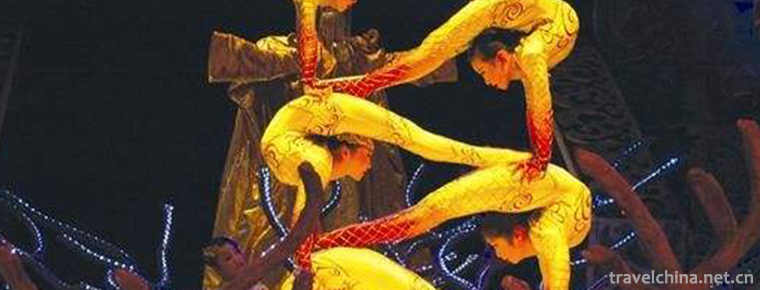
-
Wuxi film and television base
The Wuxi Film and Television Base of CCTV was originally built by CCTV to shoot "Tang Ming Huang", "Romance of the Three Kingdoms" and "Water Margin".
Views: 160 Time 2018-12-06 -
Wuhan Botanical Garden Chinese Academy of Sciences
Wuhan Botanical Garden of the Chinese Academy of Sciences is located in Wuchang District, Wuhan City, Hubei Province, China. It is a comprehensive scientific research institution integrating scientifi.
Views: 134 Time 2018-12-22 -
CITIC Golf Seaside Resort
Shantou CITIC (China International Trust and Investment Corporation) Resort Hotel is a foreign-related tourist resort hotel affiliated to Shantou Company of CITIC South China Group..
Views: 152 Time 2018-12-22 -
Daming Palace Site in Changan City of Tang Dynasty
Daming Palace Site is located in Taihua South Road, Xi'an City, Shaanxi Province. It was destroyed in Binggong at the end of Tang Dynasty..
Views: 171 Time 2019-02-13 -
Pearl Lane
Zhuji Lane, located in Zhuji Village, Zhuji Town, Nanxiong City, Guangdong Province, covers an area of about 3 square kilometers. Zhuji Ancient Lane is one of the national 4A scenic spots and one of t.
Views: 233 Time 2019-03-20 -
baizi opera
Baizi Opera, a local traditional drama in Haifeng County, Shanwei City, Guangdong Province, is one of the national intangible cultural heritage. Baizi opera is a local opera sung in Haifeng and Lufen.
Views: 169 Time 2019-04-03 -
Korean Huajiali
The flower armor ceremony of the Korean nationality is one of the important rituals of the Korean nationality's birthday ceremony. Since ancient times, the Korean people have regarded respecting the e.
Views: 275 Time 2019-04-16 -
Water splashing Festival
Dai Water-Splashing Festival is also called "Bath Buddha Festival". Dai language is called "Sangkangbimai" (meaning "New Year"). Dai people in Xishuangbanna Dai Autonomou.
Views: 421 Time 2019-04-24 -
Pansori
The main art of Korean folk art is Pan Suo Li, which appeared in the 18th century. At the beginning of the 20th century, it was introduced into China with the immigration of Korean nationality. The wo.
Views: 178 Time 2019-06-08 -
Salar Folk Songs
There are many kinds of Salar folk songs. In the course of long-term historical development, they have formed colorful and distinctive musical forms and singing styles. Salar folk songs keep the ancie.
Views: 154 Time 2019-06-12 -
The Tu nationality in Yuqiu
Tu nationality, spread in Nianduyu Village, Tongren County, Qinghai Province, is a unique local folk culture form. It is held from November 5 to 20 of the lunar calendar every year. It includes ceremo.
Views: 208 Time 2019-06-23 -
Cao Xiu
Cao Xiu(? - 228 years). Pei country Qiao (now Anhui Bozhou People. Three countries the Wei state of the Three-Kingdoms Period General, Cao Cao Clan..
Views: 228 Time 2019-09-15
